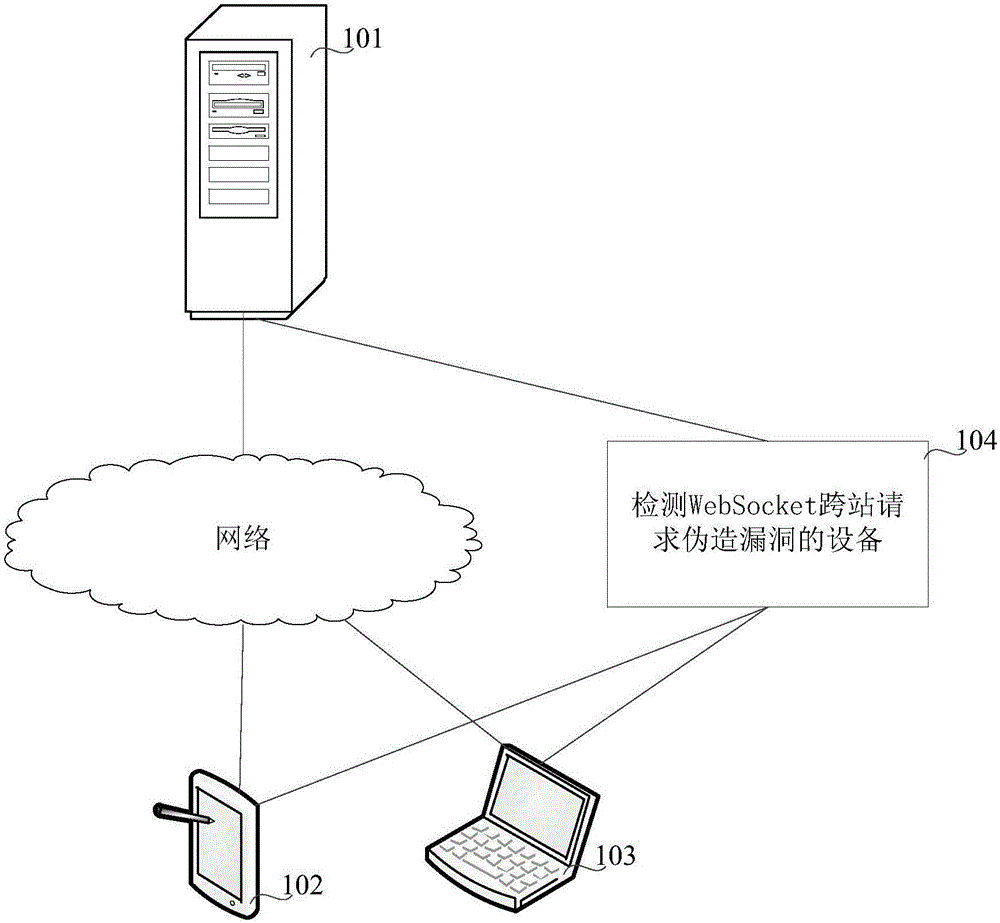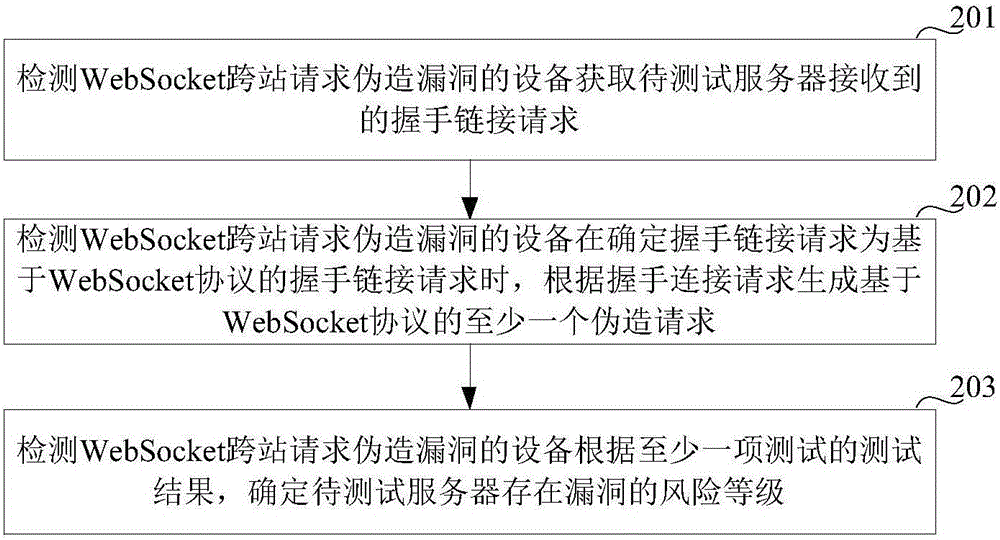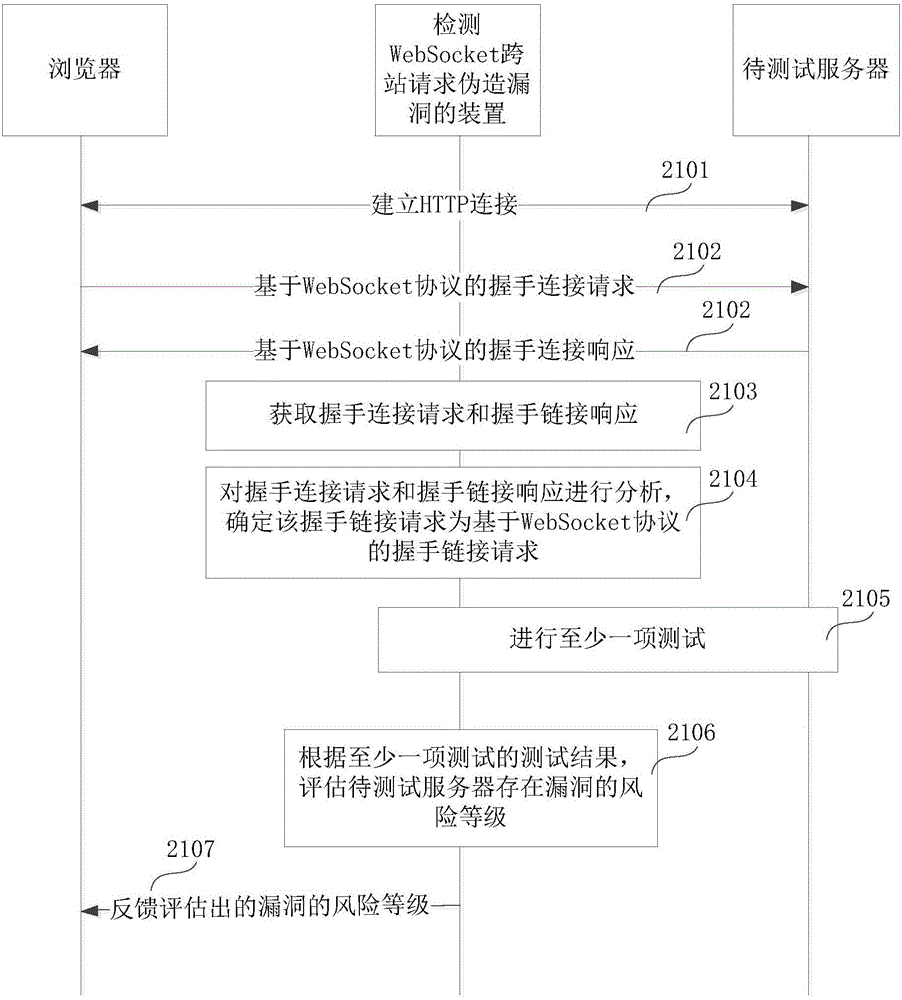Method and apparatus for detecting loophole of WebSocket cross-site request forgery
A cross-site request forgery and vulnerability technology, applied in the field of communication, can solve problems such as occupation, multi-bandwidth, HTTP request header field length, etc.
- Summary
- Abstract
- Description
- Claims
- Application Information
AI Technical Summary
Problems solved by technology
Method used
Image
Examples
Embodiment Construction
[0079] In order to make the object, technical solution and beneficial effects of the present invention more clear, the present invention will be further described in detail below in conjunction with the accompanying drawings and embodiments. It should be understood that the specific embodiments described here are only used to explain the present invention, not to limit the present invention.
[0080] It should be understood that the technical solutions of the embodiments of the present invention can be applied to various communication systems, for example: Global System of Mobile Communication (GSM for short) system, Code Division Multiple Access (CDMA for short) system, broadband Code Division Multiple Access (WCDMA for short) General Packet Radio Service (GPRS for short) system, Long Term Evolution (LTE for short) system, Frequency Division Duplex for LTE (Frequency Division Duplex for short) FDD) system, LTE Time Division Duplex (TDD for short), Universal Mobile Telecommuni...
PUM
 Login to View More
Login to View More Abstract
Description
Claims
Application Information
 Login to View More
Login to View More - R&D
- Intellectual Property
- Life Sciences
- Materials
- Tech Scout
- Unparalleled Data Quality
- Higher Quality Content
- 60% Fewer Hallucinations
Browse by: Latest US Patents, China's latest patents, Technical Efficacy Thesaurus, Application Domain, Technology Topic, Popular Technical Reports.
© 2025 PatSnap. All rights reserved.Legal|Privacy policy|Modern Slavery Act Transparency Statement|Sitemap|About US| Contact US: help@patsnap.com



